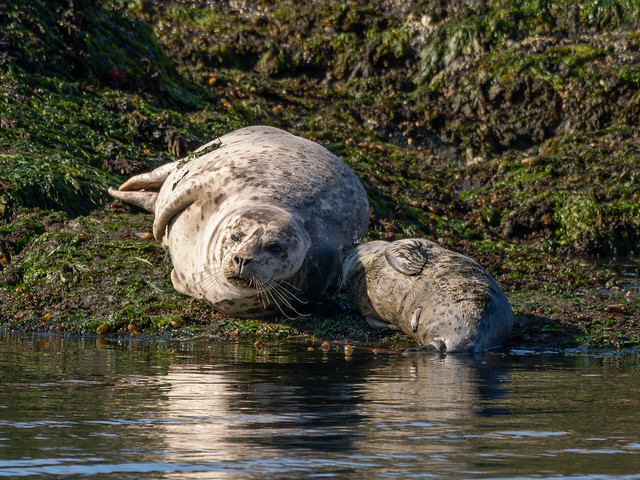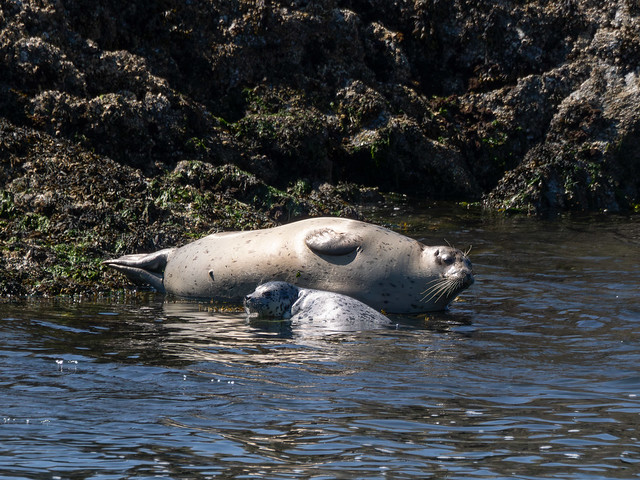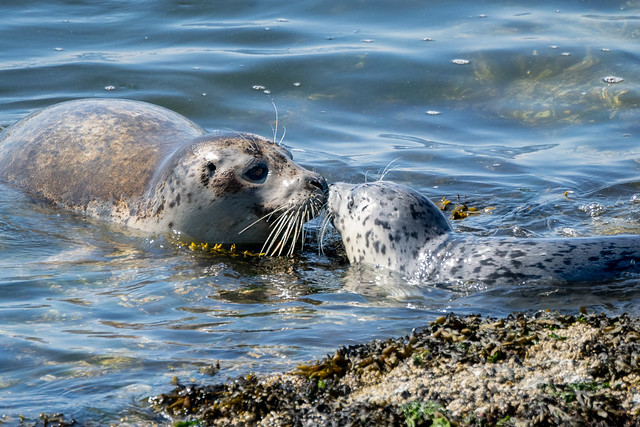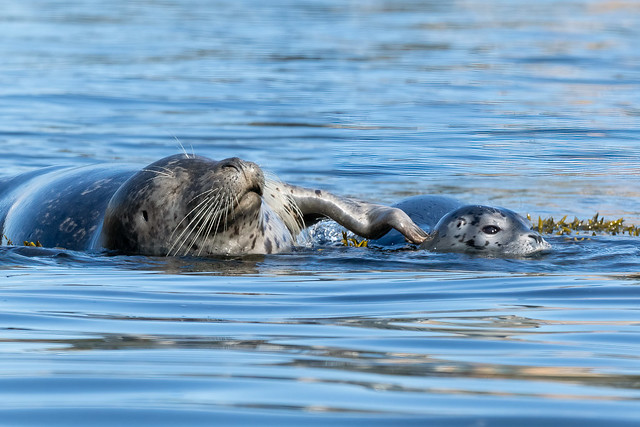August is the month for baby seals in Victoria. This year we had three mothers and babies hauling out on the little island near us. Harbor Seals have a huge range, they are found along the coasts of the Pacific and Atlantic in the northern hemisphere. Females normally give birth to a single pup each year, although sometimes they have twins. The pups can swim and dive within hours of birth. They gain weight quickly from rich mothers milk (50% fat!) and they are weaned and independent after 4 to 6 weeks. We usually see them for roughly the month of August. Harbor seals live relatively long lives - an average of 40 years in the wild. Although we see them year round in the harbor, they only seem to haul out on our little island when they have pups. They may come further into the harbor with pups to avoid predators like Orcas. When I'm kayaking I see other adults hauled out on small islands further out of the harbor. Harbor seals are normally solitary except during breeding season although I sometimes see groups of up to 5 feeding in the harbor. They can dive as deep as 500m (1600ft) for as long as 30min, but the average dive is 90m (300ft) for 5 minutes. Satellite tracking of seals in Oregon found they had an average home range of 360 square kilometers (e.g. a square 60 km by 60 km) but a core range of 30 square kilometers. I assumed they were resident around the harbor, but given the large range, they could just be visiting.
Before the Marine Mammal Act of 1973 harbor seals were almost wiped out by hunting, with a bounty on them because they were regarded as pests to fishing. The population in Oregon in 1967/68 was down to approximately 500. Since then populations have rebounded and in 2014 estimates were 12,000 in Oregon and 13,000 in Washington.
This is one of the first sightings this year. If you look closely, you can see the pup still has part of the umbilical cord attached, so I assume it was fairly new.
When the adults haul out on land, they usually turn to face the water, perhaps so they can escape quickly, or perhaps so they can watch for predators like Orcas. The pups on the other hand, usually face away from the water. I think this is partly because they're not very good at maneuvering on land, and partly because it puts them in position to feed. I think that's one of the mother's nipples you can see.
The mothers and their pups stay close together, even in the water. Other years we've only seen a single mother and pup, but this year we had up to three sets hauled out on the island. Like many youngsters the pups can be restless and playful. This one was wriggling around non stop while they mother paid no attention.
I came across these two when I was kayaking. The mother was "patting" the pup with her flipper. I'm not sure why. After a while they went in the water and I was afraid I'd made them nervous (although they hadn't appeared to be paying much attention to me). But then they popped and swam straight towards me. Once they got close enough to inspect me they dove and disappeared. Just curious I guess.
This mother and pup were also watching closely as I kayaked by.
See all 18 photos in this batch and my previous post about harbor seals
See also:






No comments:
Post a Comment